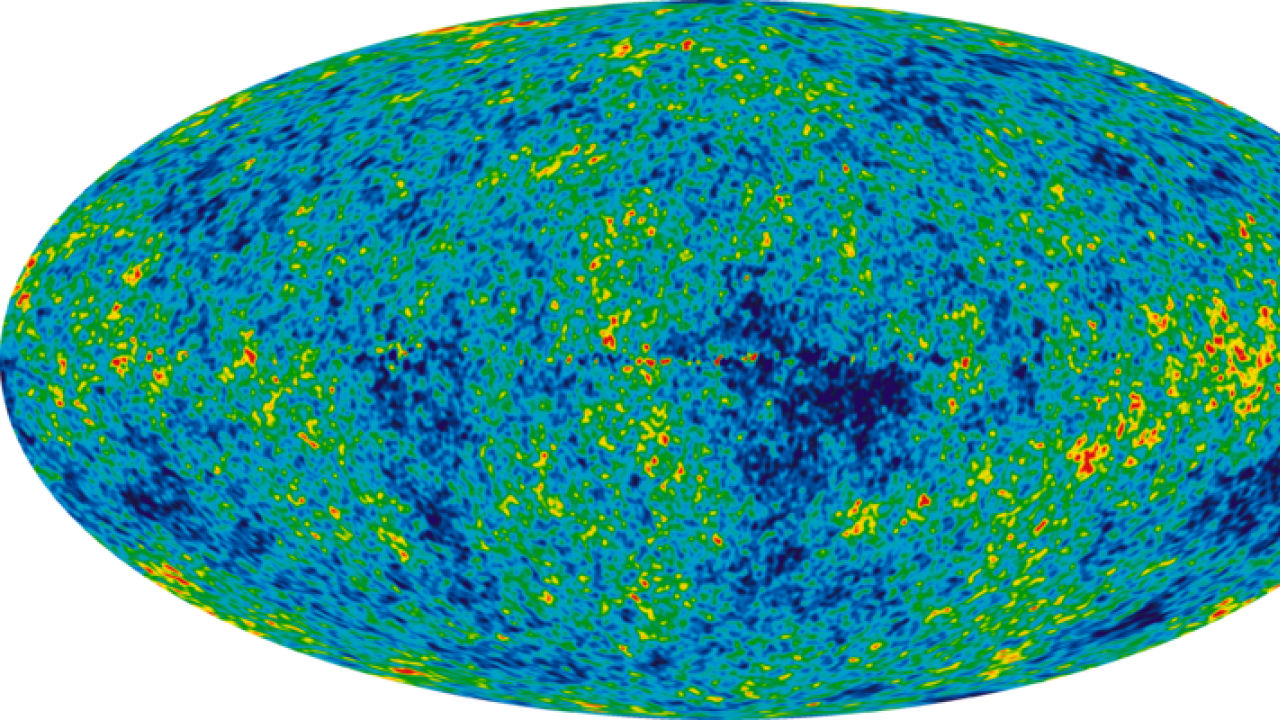
The cosmic microwave background has a story to tell. The background is a vast, nearly uniform radiation emanated from the young, hot, bright universe from the time just after the Big Bang. In a sense it is the oldest known evidence of any event in the Universe.
It is also full of clues to what exactly happened more than 13 billion years ago, and why the universe is expanding at the rate it is now. The background is isotropic -- meaning its temperature is the same in every direction -- but not perfectly isotropic. Its temperature differs a little from point to point, and if the early Universe inflated using a scalar field, there should be signs of quantum fluctuations.
Cosmologists are exploring these fluctuations carefully, looking for an ancient quantum footprint from when the universe was very tiny. They expect this footprint to be proportionately stretched out just as the Universe itself has been since the Big Bang. "It's really amazing stuff," says cosmologist Ruth Durrer of Geneva University. "We see quantum effects, which we usually put together with tiny tiny tiny things, but in larger scales with the sky."
Durrer is one of several expert lecturers teaching during ICTP's Cosmology Summer School, which has drawn about 210 participants from around the world. The two-week-long school is held every other year, and alternates with a school of particle physics. It is one of the most successful and popular activities at ICTP, and includes both an overview of the field's history and some of cosmology's most cutting-edge research.
For example, just as the high-energy physicists at the Large Hadron Collider reached a milestone by finding the Higgs boson, cosmologists are also looking remnants of another important particle: the inflaton. The inflaton would be responsible for cosmic inflation, and like the Higgs it would be a scalar boson, meaning it has no spin. Spin is a property particles have, like mass and charge, only it describes how a particle transforms while rotating. Spin is also a property separates bosons, which carry forces, with the rest of the standard model -- bosons have spins that are whole numbers, fermions such as quarks and electrons have spins that are fractions.
While the inflaton would now be long gone, it would have formed the scalar field that set the Universe on its current flat path, and signs of the ancient Universe could be found in the cosmic microwave background that could tell scientists all about the inflaton. The inflation also predicts the generation of gravitational waves, which would indicate another sought-after hypothetical particle, the graviton. "Just like electromagnetic waves are the classical aspect of photons, gravitational waves are the classical aspect of gravitons," says Durrer.
Cosmologists should have no shortage of data to explore in coming years. The Planck surveyor has measured the details of the cosmic microwave background, which will be analyzed soon. Also, a satellite planned for launch in about eight years, called the Euclid project, will try to map out the full structure of the Universe. "We hope to find clues about what dark energy is from this satellite," says Durrer. "We want to use this to measure the geometry of spacetime."
The school includes lectures from ten experts in their respective fields. This year, some students of the school will also attend a workshop on large-scale structures that will present research on the front lines of cosmology from 30 July to 3 August 2012.
















